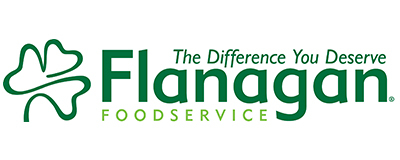
We collect basic website visitor information on this website and store it in cookies. We also utilize Google Analytics to track page view information to assist us in improving our website.
Beautiful plate presentation, smooth operating kitchen staff, and consistent food sales are the dreams of every chef. These days, however, guests are asking for much more than just "hot food hot" and "cold food cold," as the old adage goes. They want to know who cooked their food and where it came from.
Above all, the resounding question is asked: "Is it local?"
In an Ipsos poll conducted for Global News, 83 per cent of Canadians surveyed said they try to buy locally-grown and produced food; 71 per cent said they would actually pay more for it.
The unfortunate fact is that, contrary to what may be believed, local food is rarely the least expensive option. In fact, it's often the most expensive product on a chef’s menu.
So how can anybody run a profitable restaurant, maintain food costs, and have happy guests when local prices are high? It’s about balance.
This is where menu engineering comes into play.
There are more than just a few best practices that every restaurant operator should execute to ensure a profitable menu, and buying inexpensive, poor-quality food in bulk from a foreign country isn’t one of them. Nor is spiking margins on already-perceived pricier products (such as local food).
It’s about balancing your menu so the high food cost items and low food cost items work together to help reach your target food cost. If your overall cost of goods remain within your grasp, you can experiment and bring in customer-favourite locally grown and raised food.
Bryan Jurek, Director of Culinary & Executive Chef of a national casual dining brand, believes good menu engineering goals can increase profitability; this involves managing a theoretical food cost target with properly organized categories and targets.
The sweet spot is 28 per cent. But anywhere from 26 to 30 per cent is good, too. It really depends on what you want your menu to be based on; food cost or margin.
How you cost your menu and how you run your restaurant are two entirely different animals. Keep your labour and food cost goals separate so you can have a clear indication of what needs the most work. Determine how much money you need to have in your pocket at the end of every month and work backward.
What’s the best way to put big-ticket items (Ontario grass-fed lamb, for example) on a menu and keep food cost in check? Wanting to put a big ticket item on the menu (such as grass-fed Ontario lamb) isn't as much about taking other items on the menu to a lower food cost as it is making that higher food cost item work within your menu engineering and strategy. What are the key ingredients to menu engineering?
You have to build a menu with an established overall food cost in mind. Decide your tactics: categories, overall item count, and building sales volume forecasts. With every item lined up and projected sales for those items established, you will get your theoretical model. Be sure to factor in all elements that go into a kitchen's daily life: the odd sent-back plate, wasted food and expired product.
In the case of Ontario lamb, it will probably have a 30 to 35 percent cost. However, if you sell that item knowing it will be one of your highest in cost but also your highest in margin dollars, you can work with it.
It's preferable to sell an item at a 35 percent cost that puts 20 dollars per sale into your pocket than an item at 17 percent cost that only makes 5 dollars. Does food cost have to be cut throughout an entire menu to make room for the more local products?
Essentially, individual dish costs do not matter (but are important to know), provided they fit within your theoretical food cost goal. Establish how much you need to make per month and engineer your menu to fit into that goal.
What matters is your profit and loss statement at the end of every month. Local can be pricier than other products—how do I know my guests will pay for local Ontario lamb? Only you know what will sell in your market. If you want to sell a dish based on its ethical sourcing, you call it out and price accordingly. A competitive review may work if you are in a smaller market. Remember, guests want to know it is local. Draw attention to it. They will pay more if you market it effectively.
You need to develop a costing spreadsheet and enter in all ingredients with a sell price cell that you can change in real time. This is where entire menu costing comes into play, provided that the selling price of that dish and the cost still keeps you under 28 per cent on the menu as a whole.
It really depends on your market and what kind of establishment you are (fine dining, pub, bar, casual, taps, etc.).
The industry benchmark is 49 items, 7 categories, with 7 items per category. Only you know your guests and your seats. Do not undercut with only 10 items and do not oversell with an 80 item menu that confuses.
If you have no previous data (as in a new restaurant) think about hiring a consultant to help build a sales and forecasting model.
If you have been open for some time and want to begin building one, list all your menu items and how much of each item you sell per week along with your food cost per item, margin dollar per item, built by category. You can then you can figure out all figures per category, and then your entire menu.
“Features are only as good as the person selling them,” says Jurek.
The service team is as important as the kitchen staff when it comes to food. They are the ones who interact with your guests and bring every component in the restaurant to life.
If their product knowledge isn’t up-to-snuff and they aren’t passionate about your menu, guests won’t feel it, and the items won’t sell. It is also up to the cooks and chefs to be constantly quizzing their FOH staff and engaging them in the menu to be sure they are up-to-speed with everything they are required to sell.
Pricing, featuring and promoting specific menu items can also help achieve your target for overall food cost.
LTOs are a great way to test a new local product before committing. These features need to run 6 to 8 weeks for you to obtain sufficient data on sales, recipe food cost, ease of execution, and more.
Guest feedback on LTOs is just as valuable as sales; why is or isn’t an item selling? What do guests think about value, presentation, portion size? Have a system to track feedback—whether it be surveys, a quick questionnaire in the billfold, or a step of service.
Don’t put the price of the item to the bottom right of the menu item, or aligned all on the right-hand side of the page. Guests will naturally see them lined up and price-compare, choosing the least expensive item. Bury prices within the product description; it'll force your guests to focus on the food, not the price.
You don’t want to have an awesome local ingredient be overshadowed on your menu in any way. You want it to be the hero of that dish. Feature the menu item in a place on your menu where you know it will be seen. “The top two items and the bottom two items listed in every category get the most play,” says Jurek.
Make items pop with bold fonts, or outline them with a feature box. Use symbols and/or stamps to call out local ingredients, vegan or vegetarian, signature items or favourites.
If applicable to your menu style, photos also help to draw attention to certain items. “If you have photographs in a menu, they will always be your top sellers,” acknowledges Jurek. Be careful not to highlight too many items. One per category is a good rule to stand by.
If you can call out any of the below on your menu, do: Local; grass-fed; free-range; free-run; locally raised; hand-picked; fresh; free of antibiotics, hormones, steroids, premium brand names.
Article provided by Local Line.

